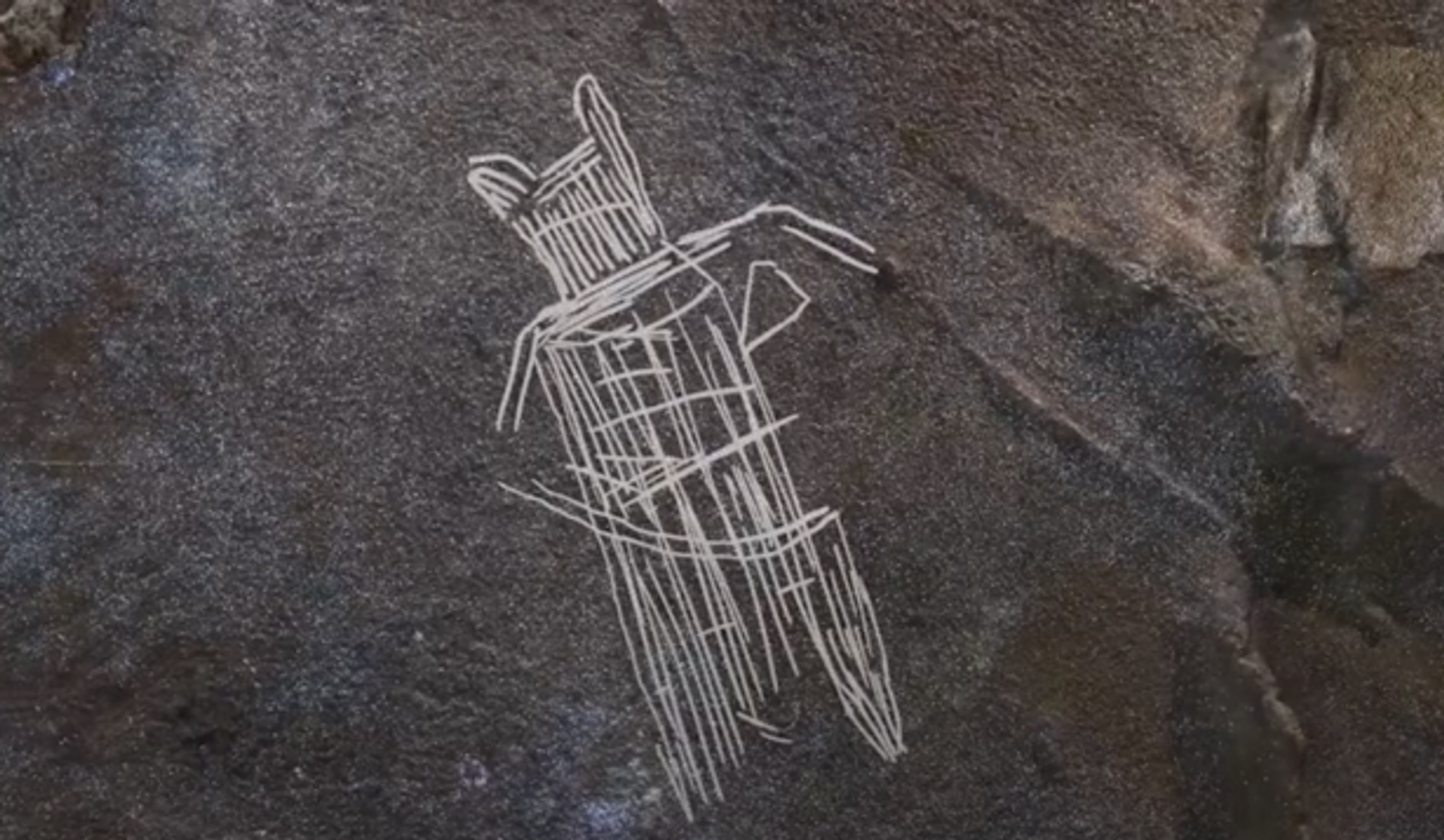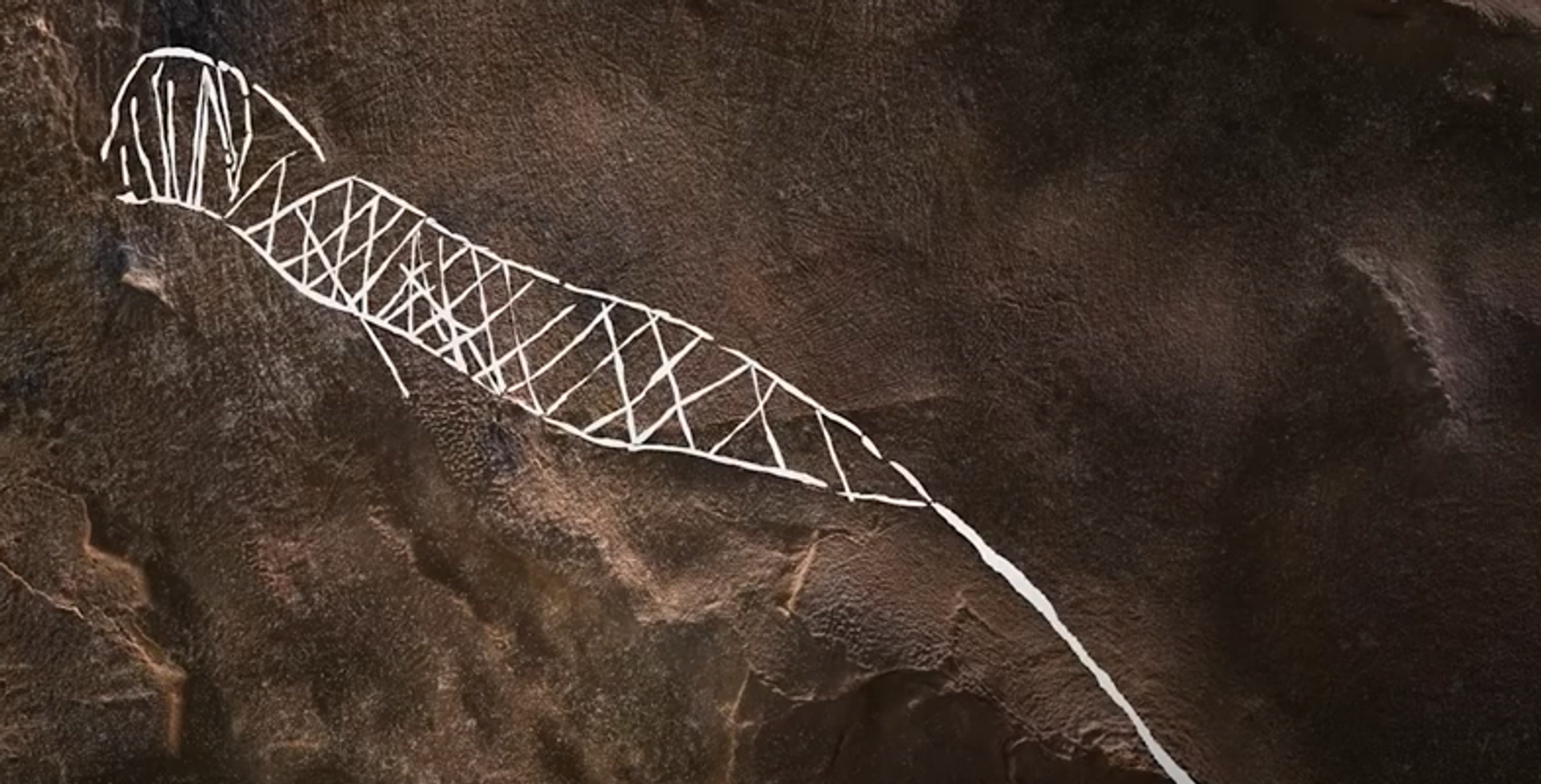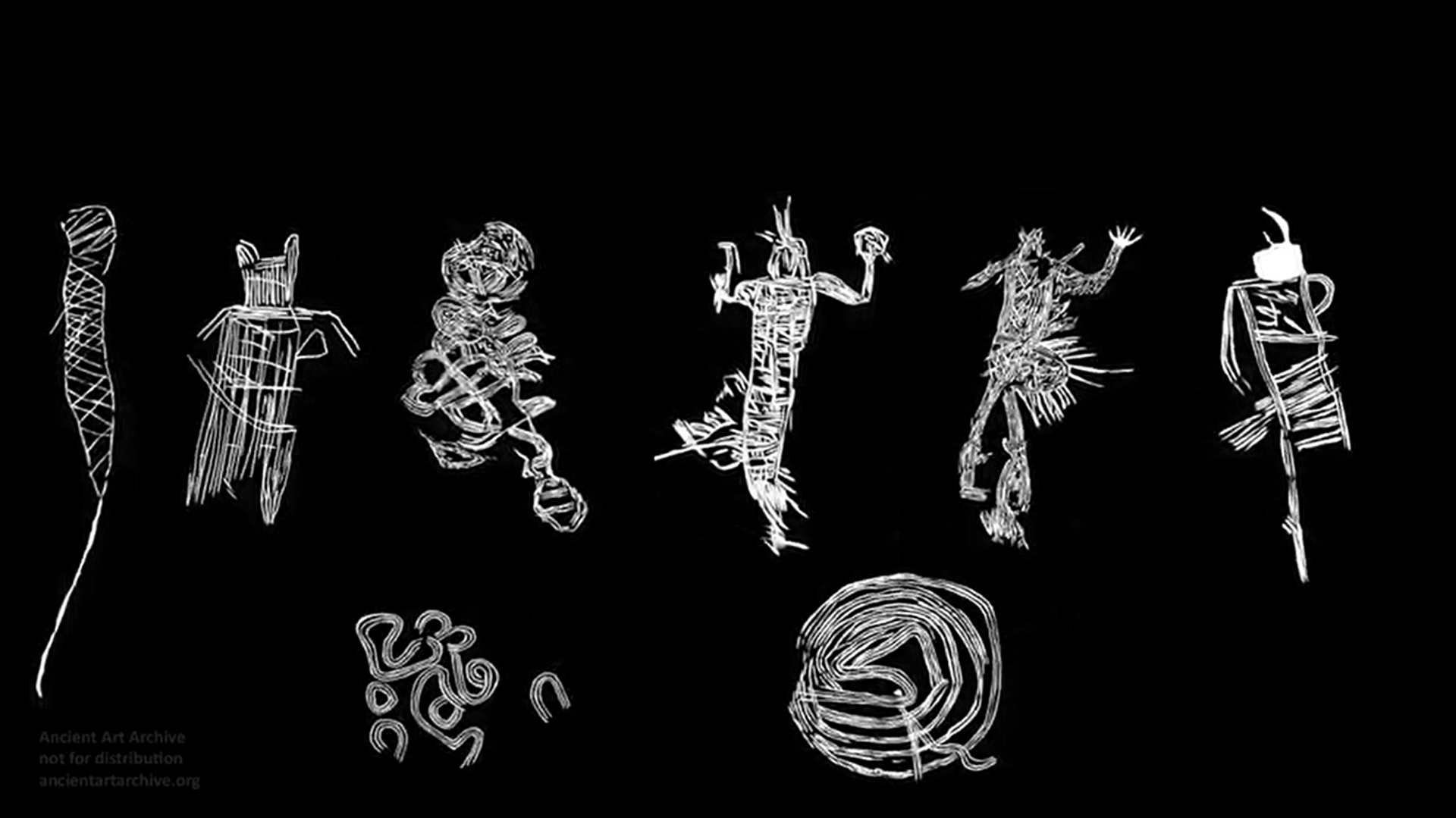https://sputnikglobe.com/20220504/1000-year-old-native-american-cave-art-discovered-in-alabama-thought-to-be-largest-in-us-1095274358.html
1,000-Year-Old Native American Cave Art Discovered in Alabama Thought to be Largest in US
1,000-Year-Old Native American Cave Art Discovered in Alabama Thought to be Largest in US
Sputnik International
An undisclosed cave in Alabama has revealed 1,000-year-old cave paintings, some of which are now thought to be the largest in the United States. Until... 04.05.2022, Sputnik International
2022-05-04T23:17+0000
2022-05-04T23:17+0000
2022-11-30T09:59+0000
native american
science & tech
archaeology
history
https://cdn1.img.sputnikglobe.com/img/07e6/05/04/1095273924_1:0:1366:768_1920x0_80_0_0_1921717903d63ab901dc737bf17f26a2.png
Jana Simek and his team of archeologists published a research paper on Tuesday in the journal Antiquity, detailing an exciting discovery of cave art found in Alabama that is at least 1,000 years old. The paintings were created by indigenous North Americans prior to the Spanish invasion of the area in 1565.The Alabama cave— which remains unnamed to protect its location and contents— was first recognized to contain cave art in 1998. Now using 3D photogrammetry, a technique “that produces digital models that can be manipulated in virtual spaces,” researchers have discovered some of the largest known Native American cave art to date.The mud glyphs were etched into a thin mud veneer on the cave ceiling that was then protected by condensation corrosion.Archeologists assume that the drawings were made using either human fingertips or a tool made up of “several parallel, rounded elements.” Some of the images were also drawn using what the team assumes is a flat-edged tool.The cave is a treasure trove for archeologists; it holds hundreds of cave paintings and is now considered the most plentiful location for Native American cave art in the United States.According to Simek, the cavern is made up of more than five kilometers of underground passageways. The ceiling where the mud glyphs were inscribed is barely a meter from the floor in some areas. In order to navigate the area, a person would either have to crouch or crawl.While much of the art consists of abstract shapes and “swirling lines,” recognizable figures including serpents, insects, birds, and anthropomorphs were also drawn on the cave’s walls.At least five large glyphs that were previously either too big or too faint to be seen are now being revealed. They include three humanlike beings dressed in regal garments, a twisting figure with a rattlesnake-like tail and a long serpent with scales. The drawings are between .93 meters and 3.37 meters long— making the larger artworks the biggest in North America.Native Americans who lived in this area at that time are referred to as Woodland Native Americans and inhabited village settlements, constructed large earthen mounds for religious worship and traded across the south, east, and mid-west of North America. They continued existing in that area until they were forcibly removed by the US government by the late 1800s following the Indian Removal Act signed into law by then President Andrew Jackson on May 28, 1830.The images discovered in this Alabama cave may be linked to the “underworld,” as caves during that time were representative of the underworld. The drawings are also similar to images found on Woodland-style pottery. The researchers consulted with the Eastern Band of Cherokee Indians whose homeland includes the area where the cave exists.
Sputnik International
feedback@sputniknews.com
+74956456601
MIA „Rossiya Segodnya“
2022
News
en_EN
Sputnik International
feedback@sputniknews.com
+74956456601
MIA „Rossiya Segodnya“
Sputnik International
feedback@sputniknews.com
+74956456601
MIA „Rossiya Segodnya“
native american, science & tech, archaeology, history
native american, science & tech, archaeology, history
1,000-Year-Old Native American Cave Art Discovered in Alabama Thought to be Largest in US
23:17 GMT 04.05.2022 (Updated: 09:59 GMT 30.11.2022) An undisclosed cave in Alabama has revealed 1,000-year-old cave paintings, some of which are now thought to be the largest in the United States. Until recently, the mud glyphs were lost to the naked eye after mud naturally accumulated on the cave’s walls in the millennium that followed its creation.
Jana Simek and his team of archeologists published a research paper on Tuesday in the journal
Antiquity, detailing an exciting discovery of cave art found in Alabama that is at least 1,000 years old. The paintings were created by indigenous North Americans prior to the Spanish invasion of the area in 1565.
The Alabama cave— which remains unnamed to protect its location and contents— was first recognized to contain cave art in 1998. Now using 3D photogrammetry, a technique “that produces digital models that can be manipulated in virtual spaces,” researchers have discovered some of the largest known Native American cave art to date.
"This methodology allows us to create a virtual model of the space that we can manipulate," says Simek, a professor of anthropology at the University of Tennessee. "In this particular case, the ceiling of the cave is very close to the floor. So your field of vision is limited by your proximity to the ceiling. We never saw these very large images because we couldn't get back far enough to see them.”
The mud glyphs were etched into a thin mud veneer on the cave ceiling that was then protected by condensation corrosion.
Archeologists assume that the drawings were made using either human fingertips or a tool made up of “several parallel, rounded elements.” Some of the images were also drawn using what the team assumes is a flat-edged tool.
The cave is a treasure trove for archeologists; it holds hundreds of cave paintings and is now considered the most plentiful location for Native American cave art in the United States.
According to Simek, the cavern is made up of more than five kilometers of underground passageways. The ceiling where the mud glyphs were inscribed is barely a meter from the floor in some areas. In order to navigate the area, a person would either have to crouch or crawl.
While much of the art consists of abstract shapes and “swirling lines,” recognizable figures including serpents, insects, birds, and anthropomorphs were also drawn on the cave’s walls.
At least five large glyphs that were previously either too big or too faint to be seen are now being revealed. They include three humanlike beings dressed in regal garments, a twisting figure with a rattlesnake-like tail and a long serpent with scales. The drawings are between .93 meters and 3.37 meters long— making the larger artworks the biggest in
North America.
Native Americans who lived in this area at that time are referred to as Woodland Native Americans and inhabited village settlements, constructed large earthen mounds for religious worship and traded across the south, east, and mid-west of North America. They continued existing in that area until they were forcibly removed by the US government by the late 1800s following the Indian Removal Act signed into law by then President Andrew Jackson on May 28, 1830.
The images discovered in this Alabama cave may be linked to the “underworld,” as caves during that time were representative of the underworld. The drawings are also similar to images found on Woodland-style pottery. The researchers consulted with the Eastern Band of Cherokee Indians whose homeland includes the area where the cave exists.




